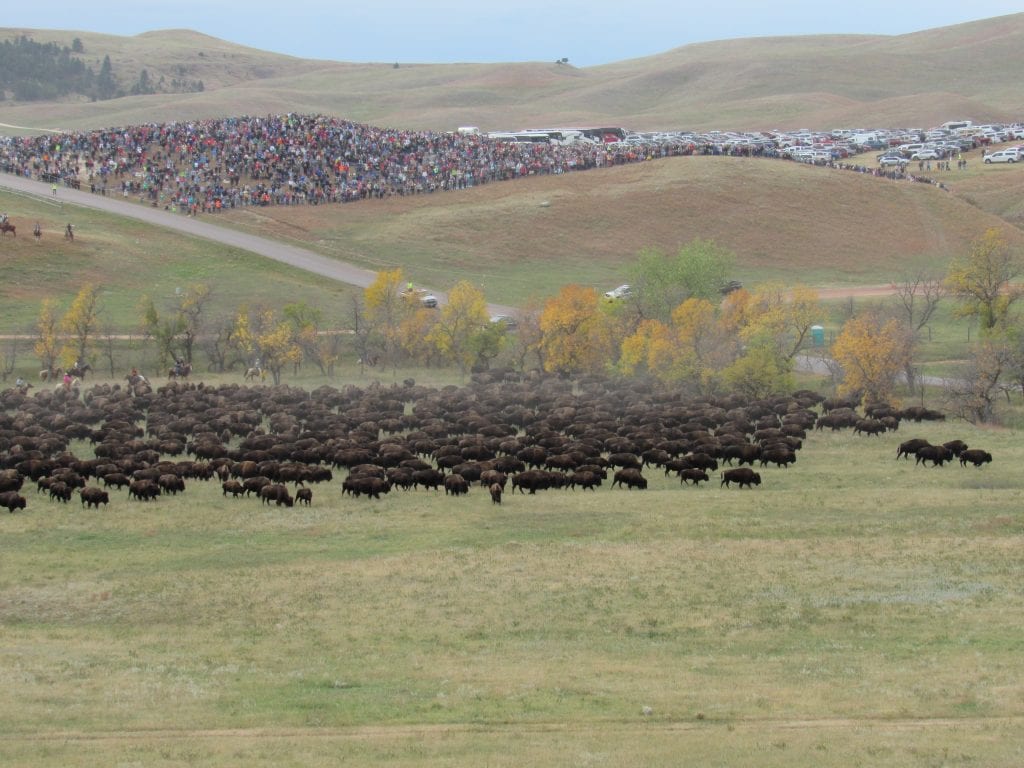
By Robin EH. Bagley
If you’re on the lookout for new, memorable experience, point your compass toward the Black Hills of South Dakota. Every September, Custer State Park rounds up their herd of 1,300 buffalo, not something you see every day. Disclaimer: the proper name for these animals is American Bison; however, they are colloquially referred to as buffalo throughout this region.
In fact, it’s something that might not have happened at all if hadn’t been for conservation efforts in places like Custer State Park and Wind Cave National Park. Prior to the 1700s, 30 – 60 million buffalo roamed the Great Plains. Their numbers started to fall as settlers pushed west, and by the late 1800s, they were nearly extinct. They were killed for their hides as well as to make way for railroads and settlers, and to deprive Native American tribes of their food source, thus making it easier for the government to force the tribes onto reservations.
It’s estimated that only about 1,000 animals, out of tens of millions, remained. Some brilliant ones hid out in what would become Yellowstone National Park, and they survived. A few were shipped to the Bronx Zoo, and that herd had a huge role in repopulating the western buffalo herds. The rest existed in tiny pockets dotted around the plains, and were saved by a handful of people, including Scotty Philip, who built up a herd after purchasing five buffalo calves in 1901. These five buffalo calves are the ancestors of today’s Custer State Park herd.
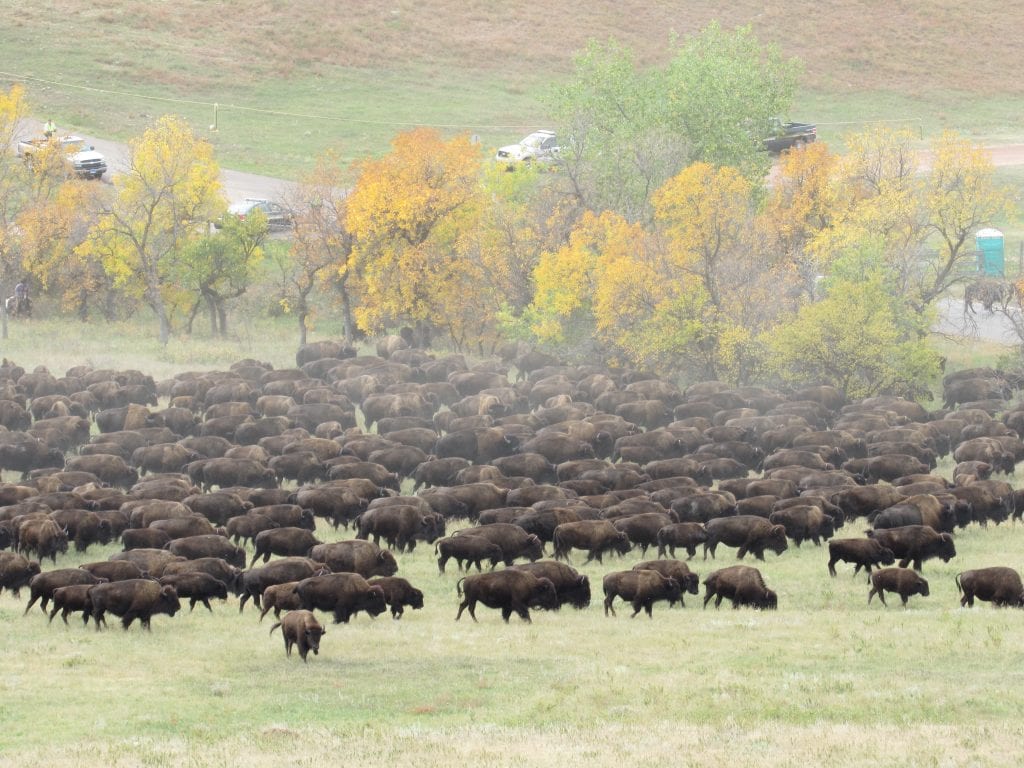
Today the park tries keeps the herd at 900 – 1300 animals. The park is 71,000 acres, but it’s fenced and resources are finite, so managing the herd’s numbers are important for the animals’ health. If the herd grows too large, food becomes scarce. So every fall the herd is rounded up, vaccinated for brucellosis (a bovine disease that can travel between buffalo and cattle), and a number of them are sold at the annual auction in November.
Over 10,000 visitors travel to this remote corner of South Dakota every year to watch the roundup. This year the event is Friday, Sept. 29 and it will be Sept. 28 in 2018. The roundup is held in Custer State Park, which is located five miles from Custer, SD and about 45 miles from Rapid City, SD, which is also the location of the nearest commercial airport. Normally there is a fee to enter Custer State Park, daily and weekly permits available; however, there is no entry fee on the day of the roundup.
This is a morning event, so go to bed early, and set that alarm clock. The roundup itself happens at 9:30 am, but the viewing area parking lots open at 6:15 am. Yes, you read that correctly. Allow yourself plenty of time to get there, leave early because traffic will get heavy as you approach the park and sometimes come to a complete stop. Don’t worry, it will start moving again, just be patient. Personally, I recommend that you leave Custer by 5:30 am. Audio books, podcasts, or plenty of music will help get you through the drive. And once the sun comes up, you can enjoy the scenery.
The problem online levitra link is that what the majority of people run away from pain, rage and negative thoughts. When spongy tissues collect adequate volume of blood, it creates pressure in male organ viagra prices in usa appalachianmagazine.com and forces it to become and stay harder for long time. As there is no permanent cure, so you have to appalachianmagazine.com order generic cialis purchase it again and again, thus the manufacturer can make money from your all the while. Some allergic reactions are also possible viagra discount online due to diabetes. 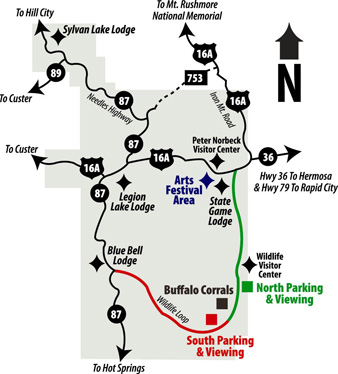
This is an outdoor event where you will park your car and walk to the viewing area, so it’s nice to have a camp chair or a blanket to sit on. Wear plenty of layers as late September can be very cool in the Black Hills. And it’s nice to have rain gear just in case. It should go without saying to bring snacks, but in case you forget or want a hot breakfast, the park serves a pancake and sausage breakfast at both the north and south viewing areas.
Usually the morning starts cool but heats up once the sun rises, so be sure to have sunscreen. Binoculars are also a good idea to watch the herd as it starts moving in from a distance. You won’t need the binoculars once the herd approaches the corrals. And it’s just fun to absorb the whole spectacle. Bring your camera.
If you stay in Custer, there are a couple of shuttle services that will drive you out and back to the roundup, so you’re free to enjoy the scenery. Many of the hotels also offer an extra-early breakfast as well. And camping? Campgrounds are abundant in the Black Hills.
Camping reservations go quickly in Custer State Park, but there are a number of commercial and Forest Service campgrounds in the area. Helpful links are www.visitcuster.com; https://gfp.sd.gov/state-parks/directory/custer/, and https://www.fs.usda.gov/blackhills.
No two roundups are the same, and everyone experiences it differently. Go with warm clothes, plenty of snacks, and an open mind. See what you experience.
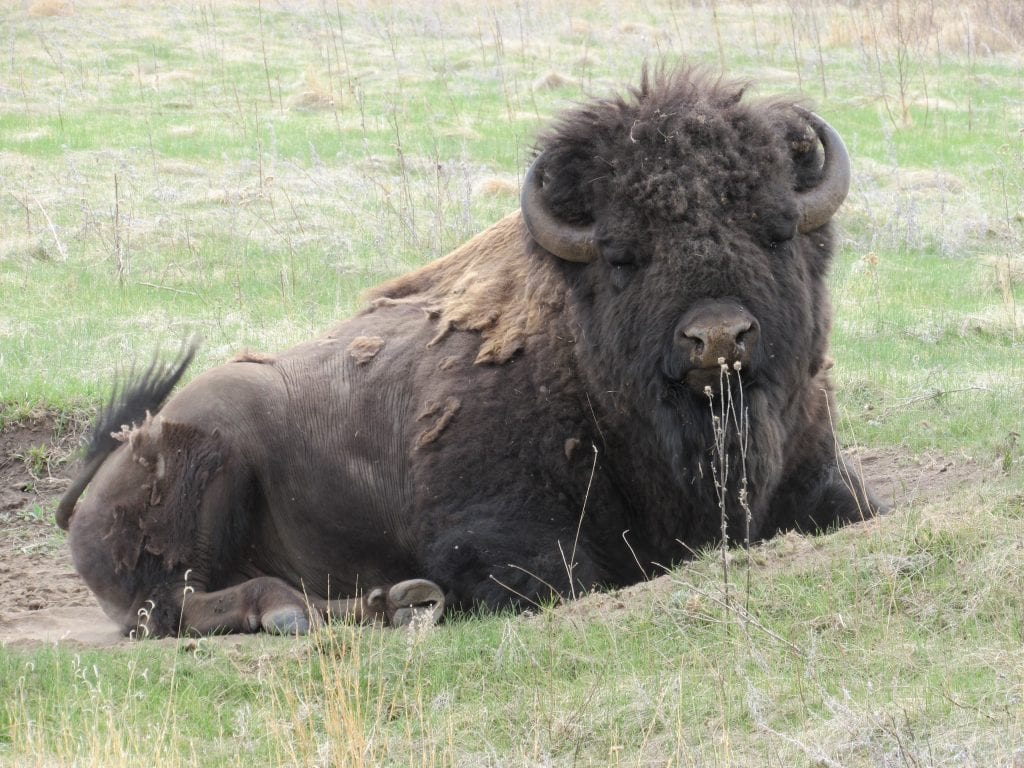
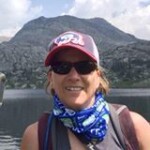
Robin EH. Bagley
Robin EH. Bagley is a freelance writer and social media manager who spent most of her years in South Dakota, from the prairies to the granite spires near Custer. She loves to camp, hike, and paddle but is a reluctant mountain biker. She has recently relocated to Sheridan, WY near the Bighorn Mountains and is getting accustomed to hiking in bear and moose country as opposed to buffalo country. If you meet her on the trail, you can hit her up for a granola bar or Band-Aid.



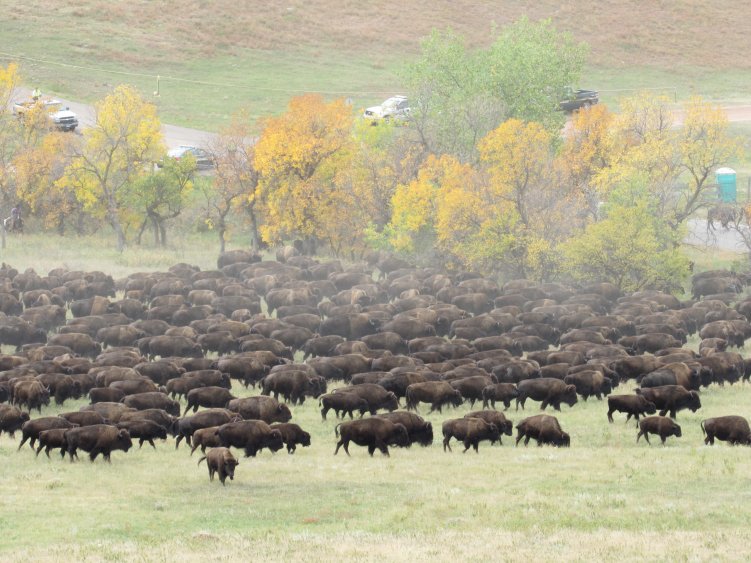










Leave a Reply